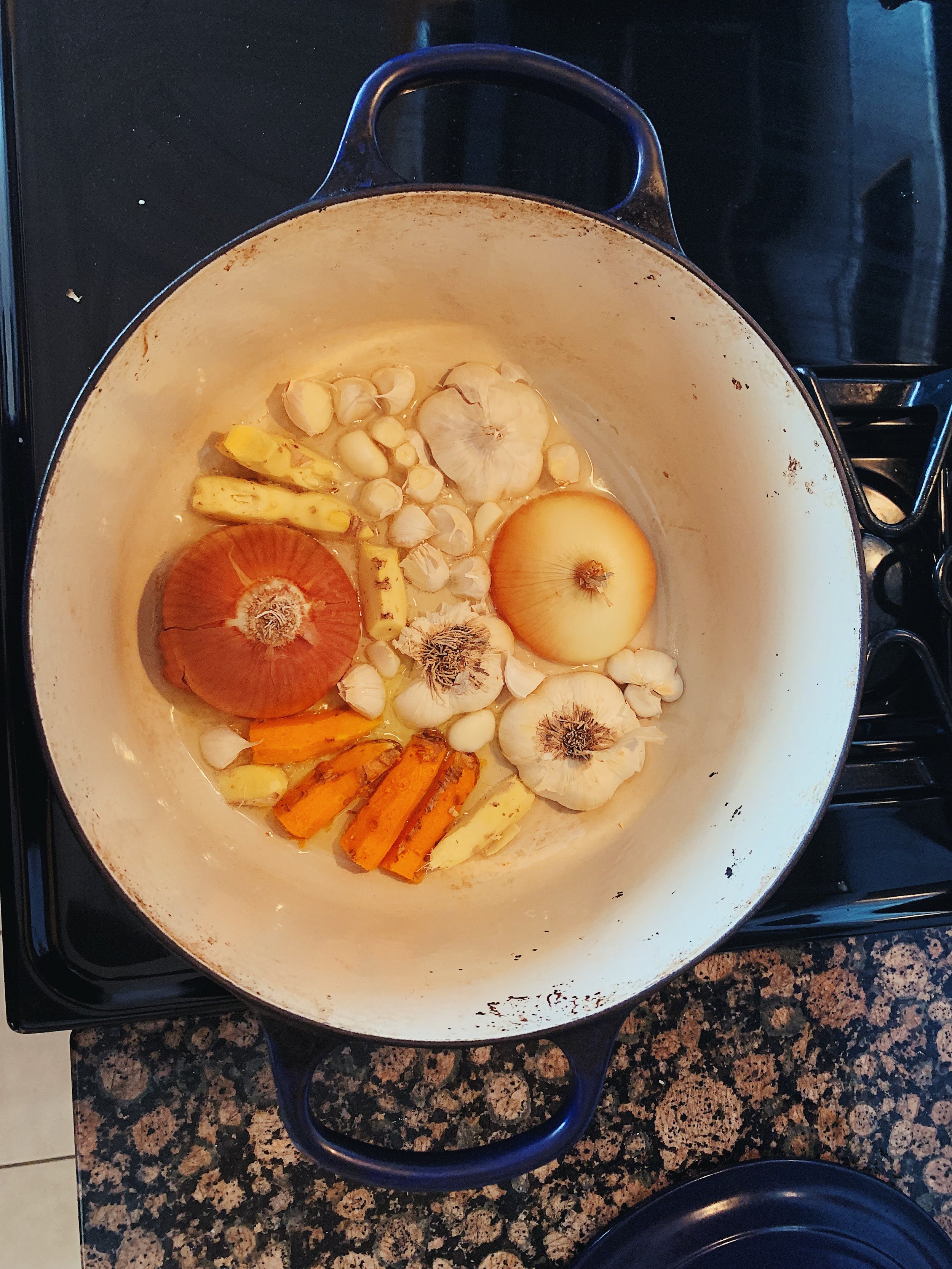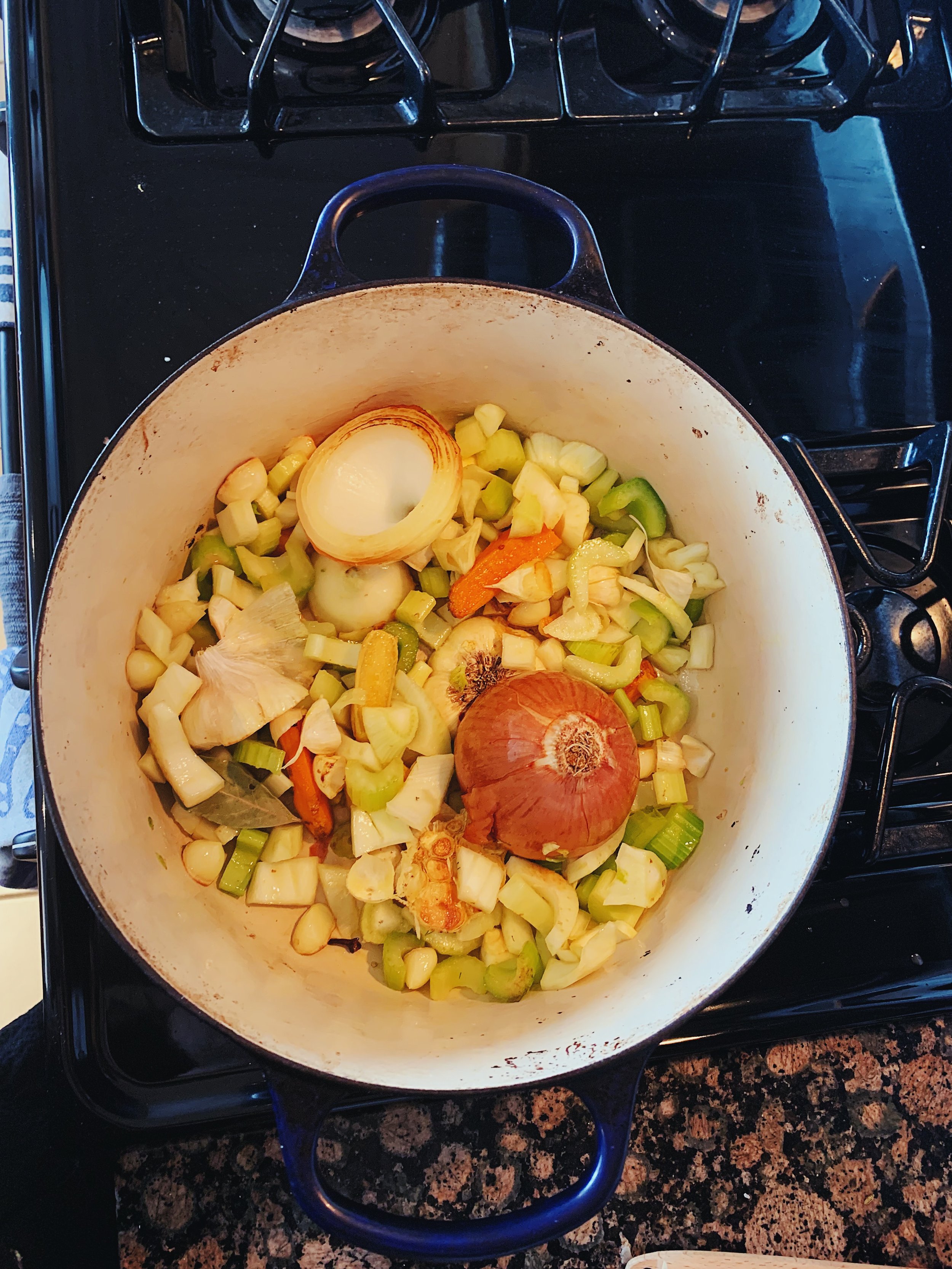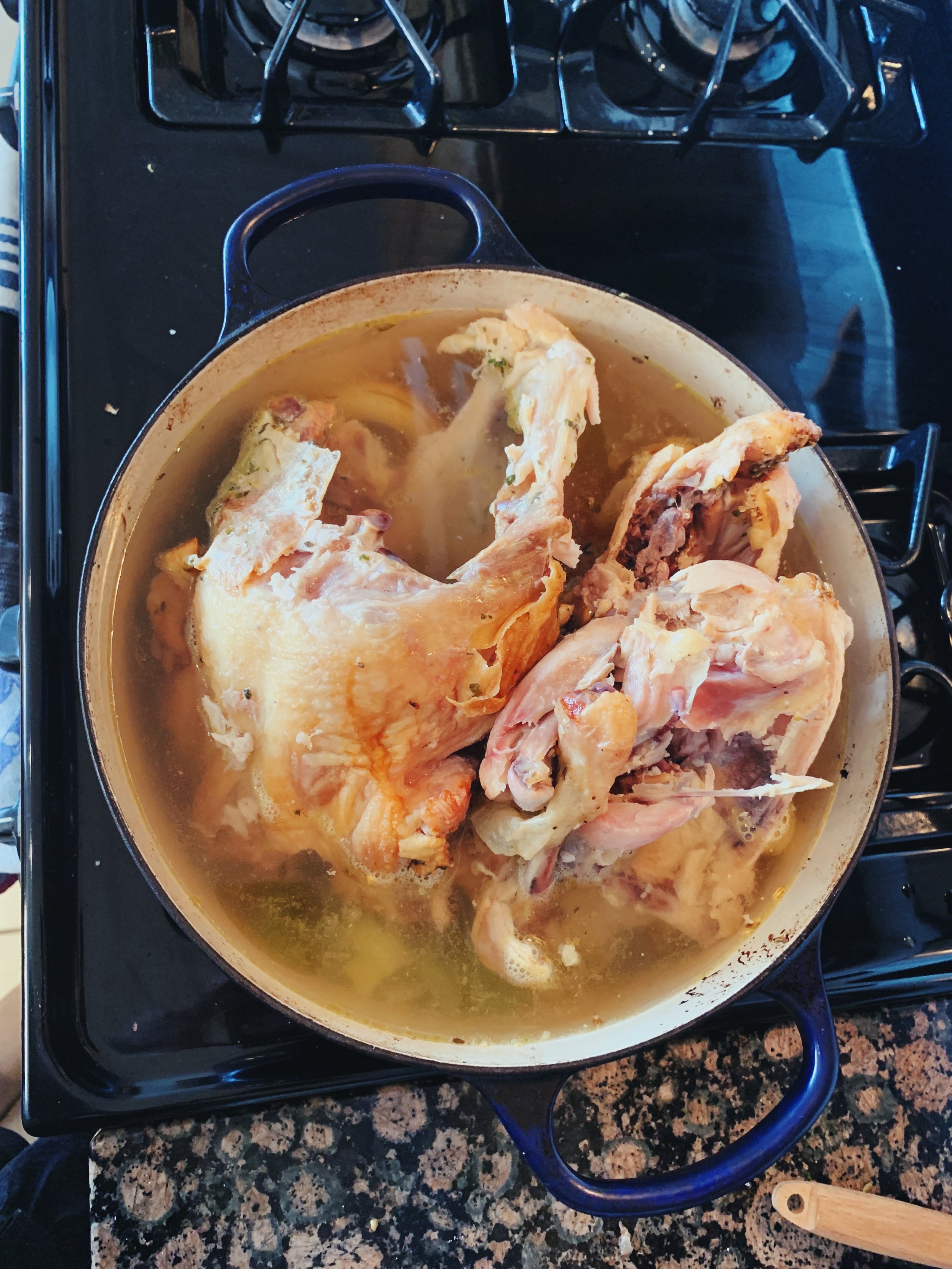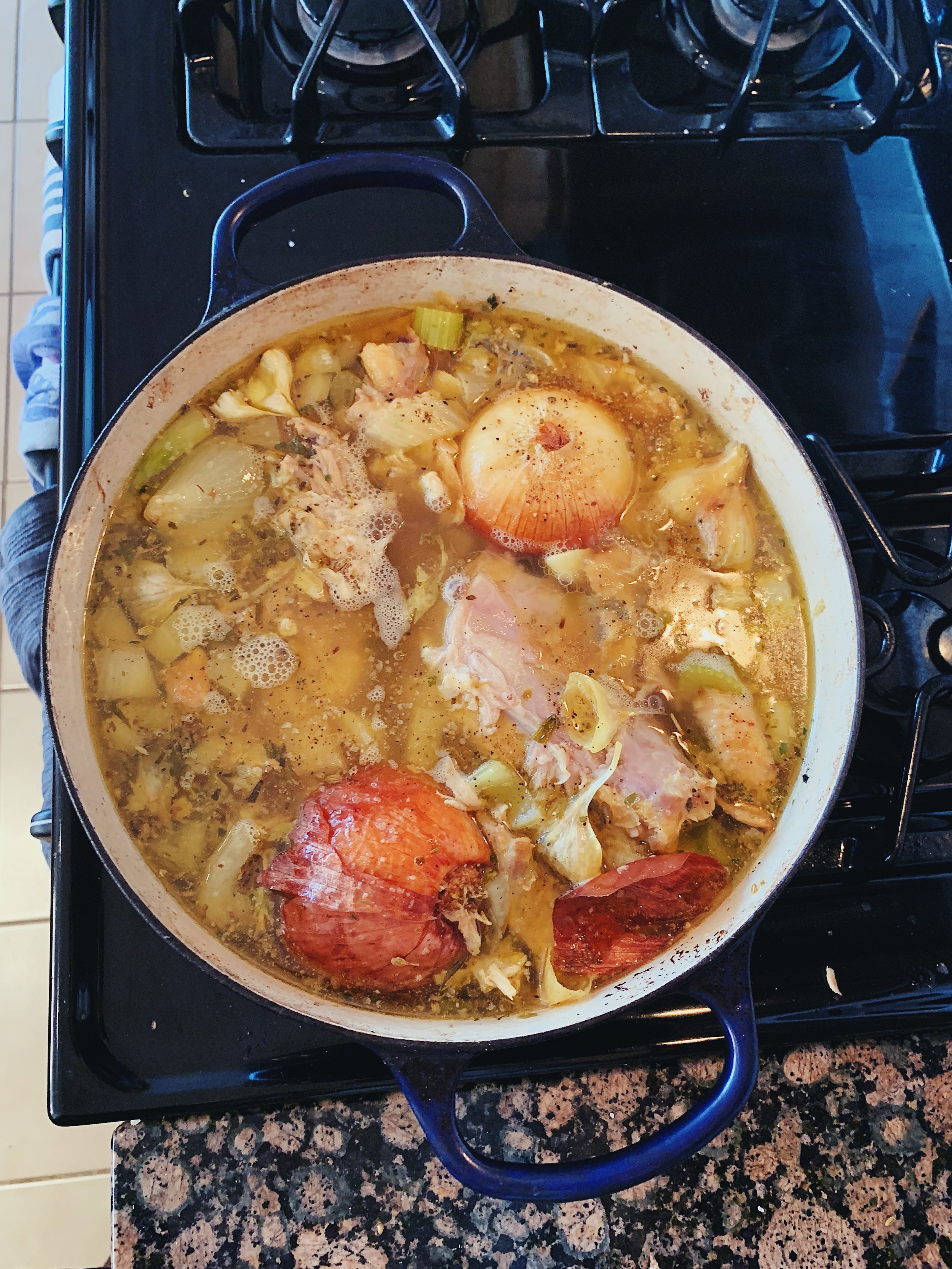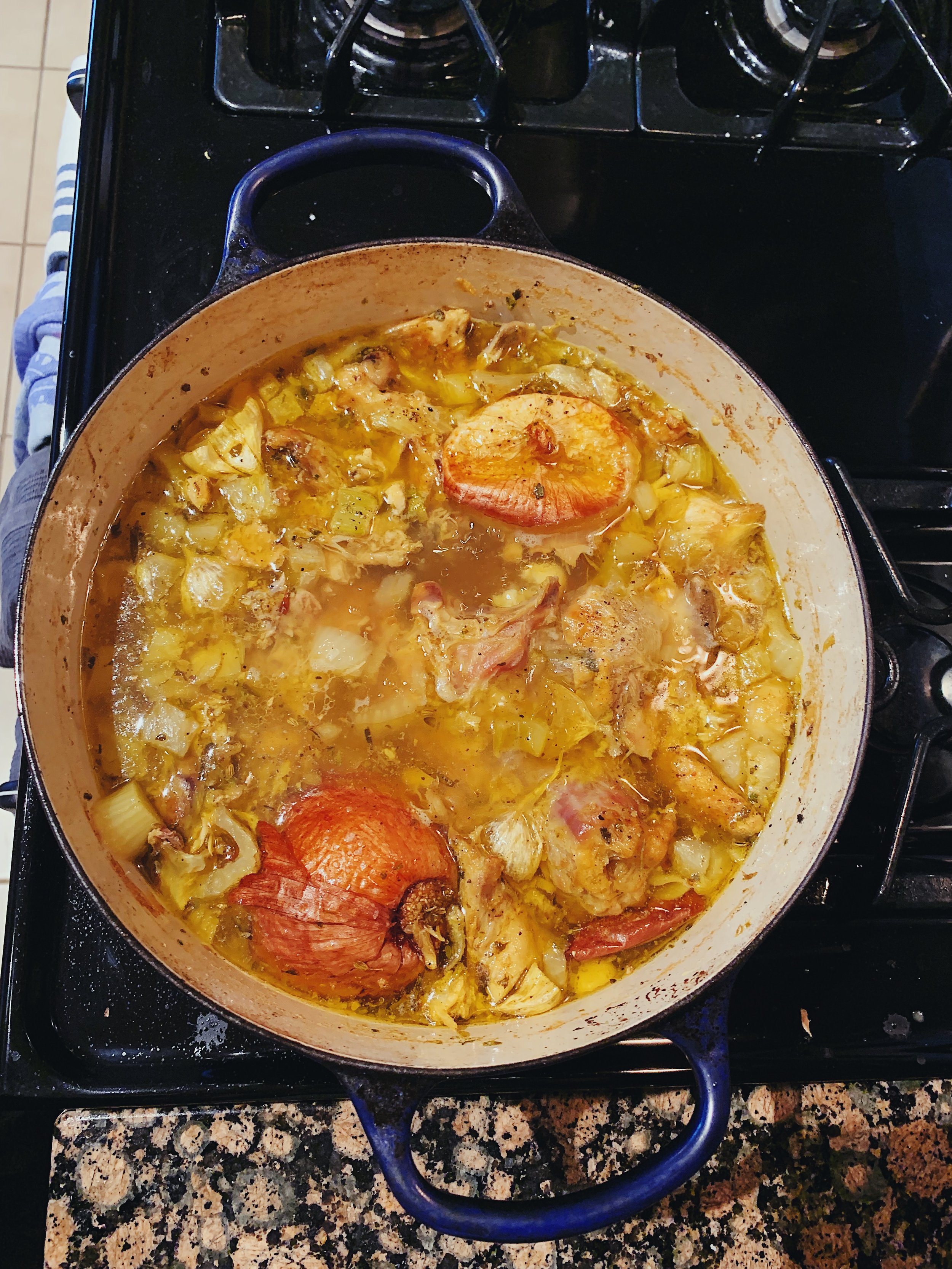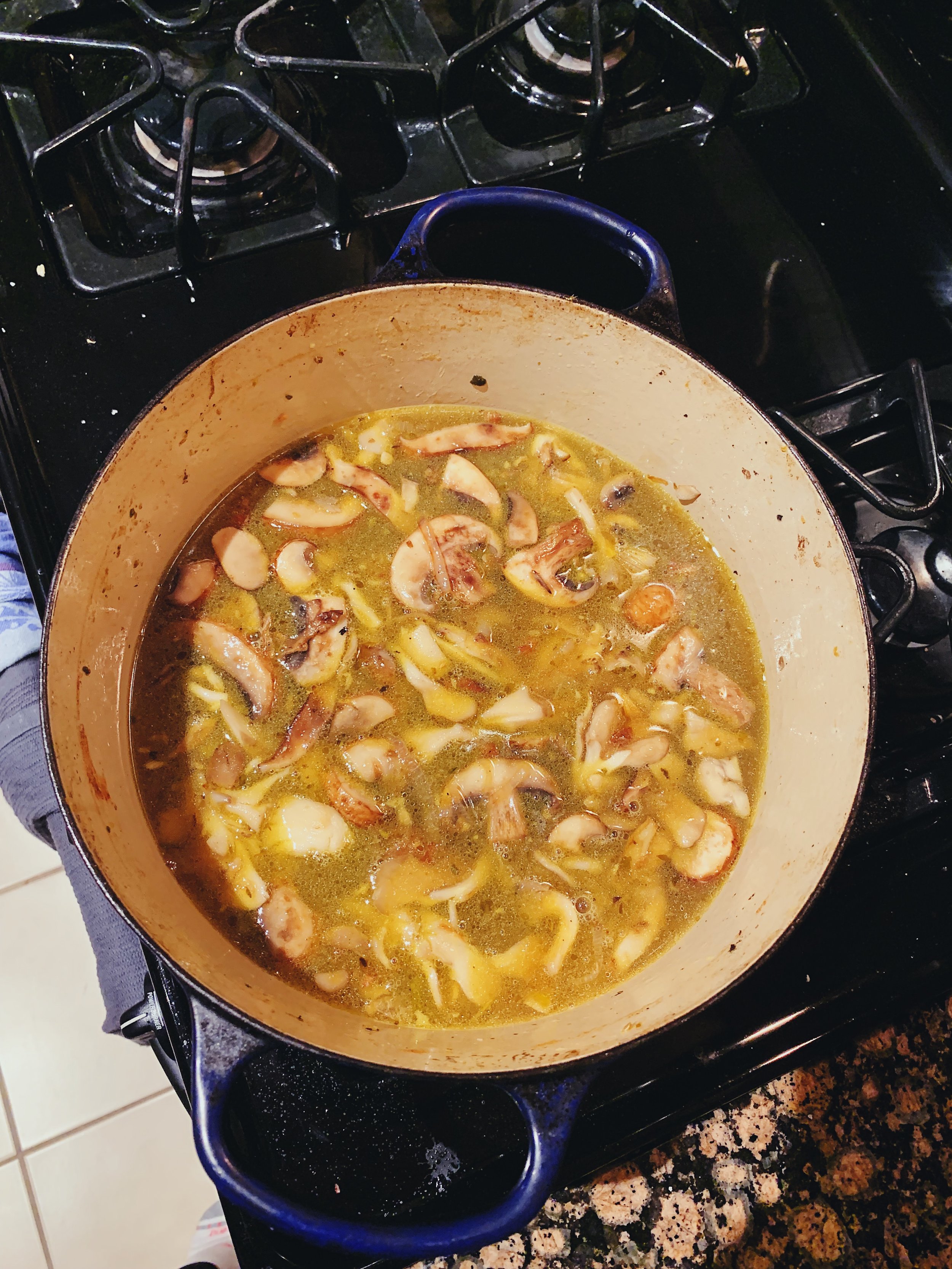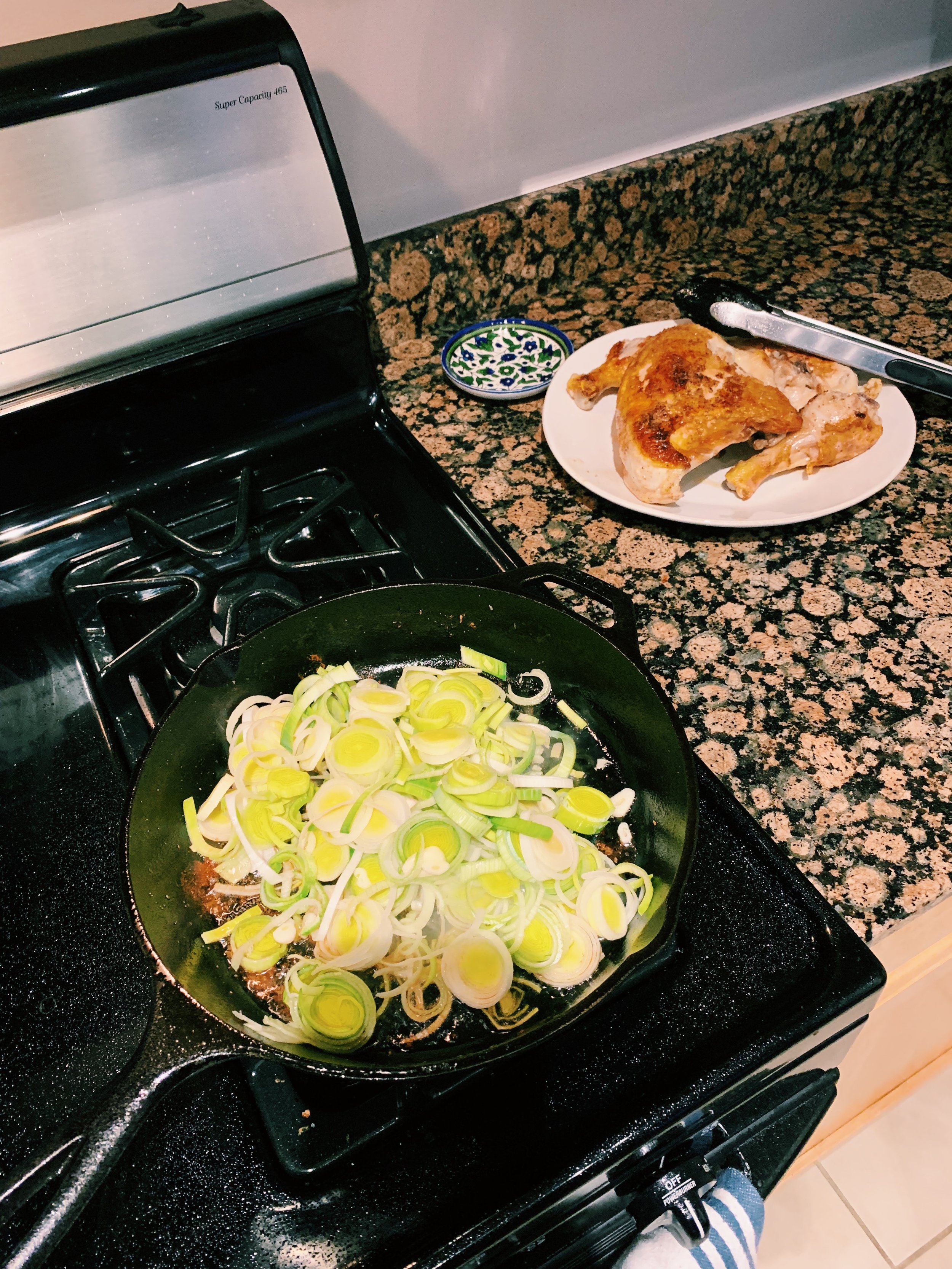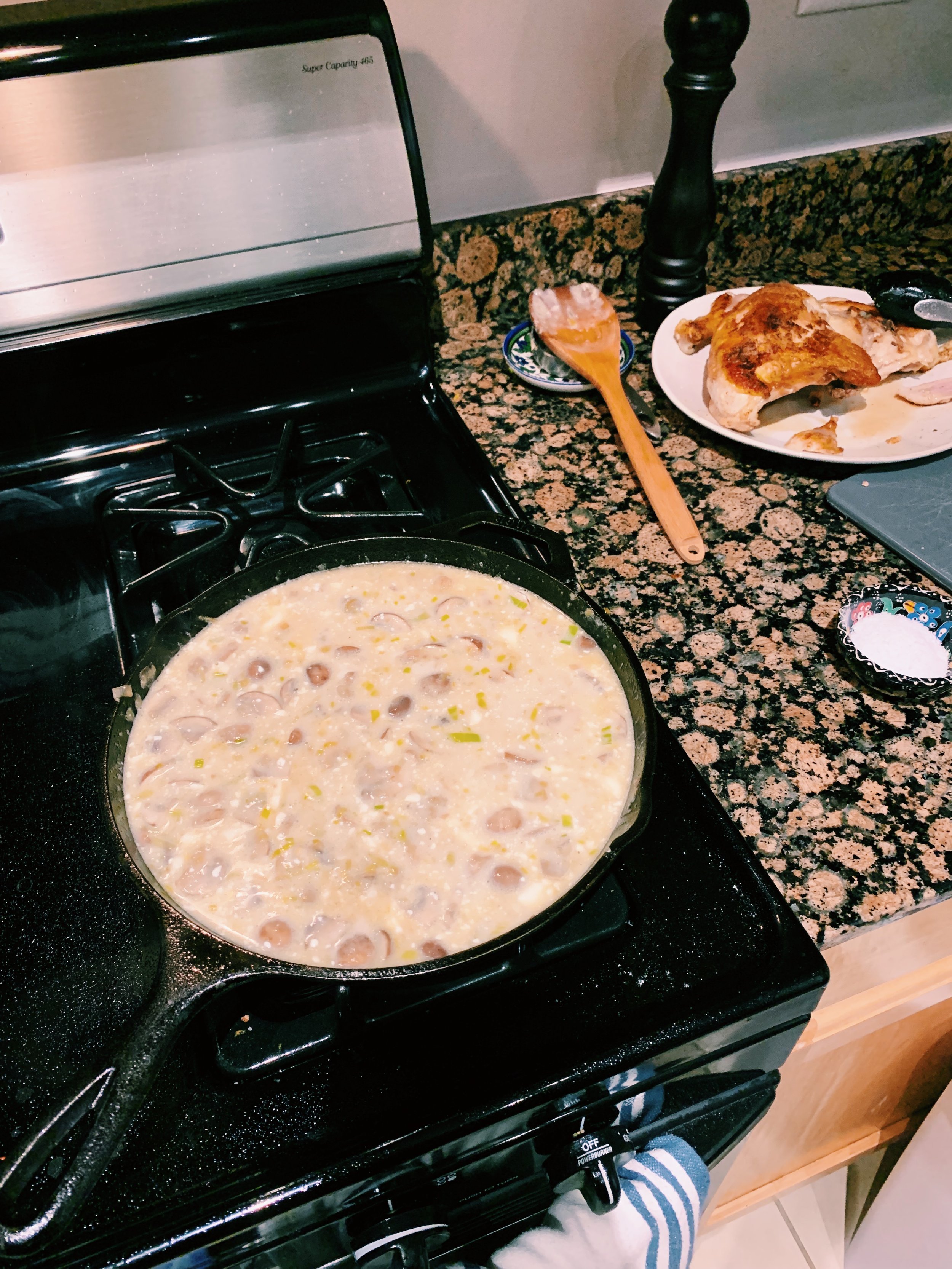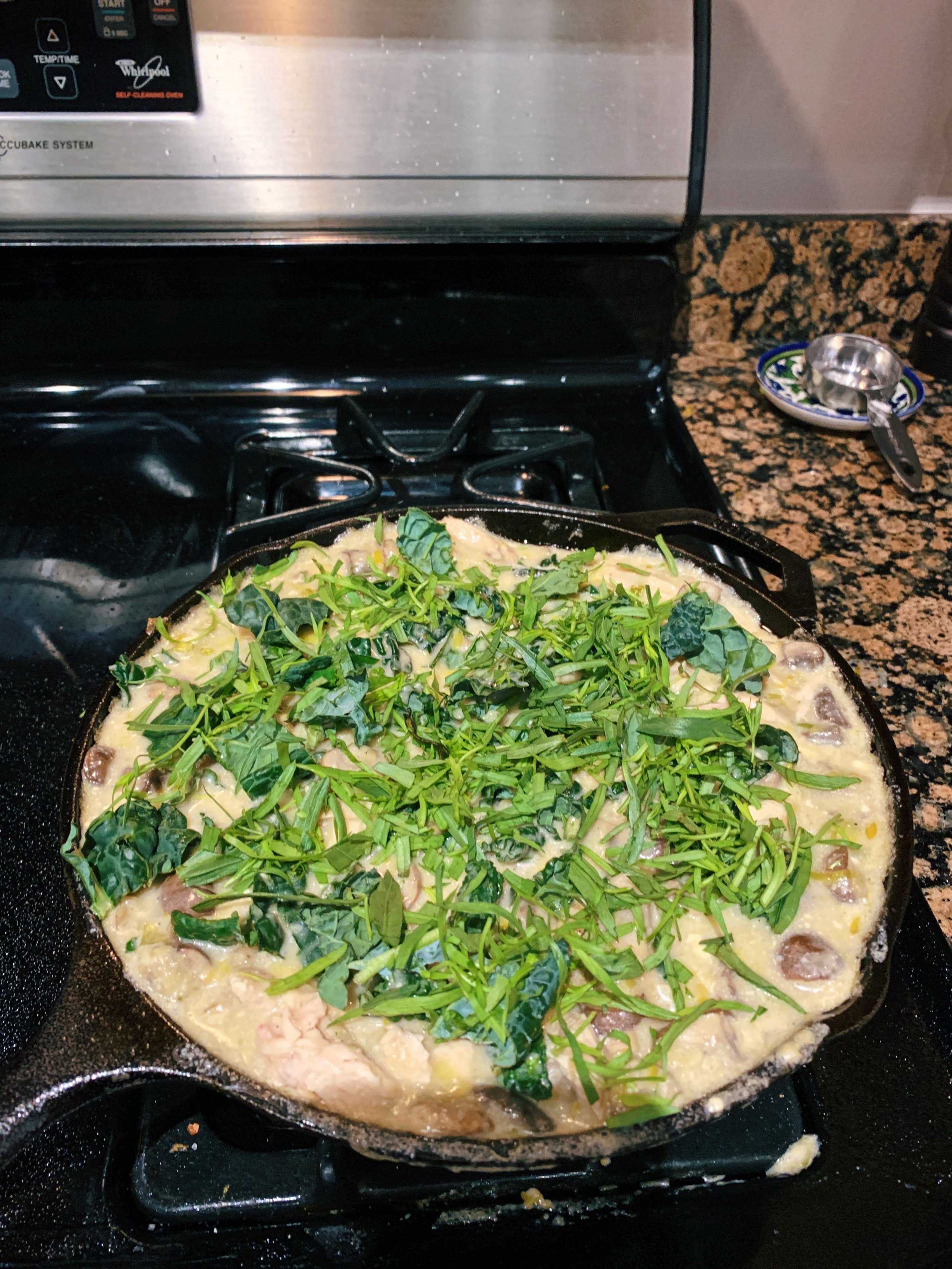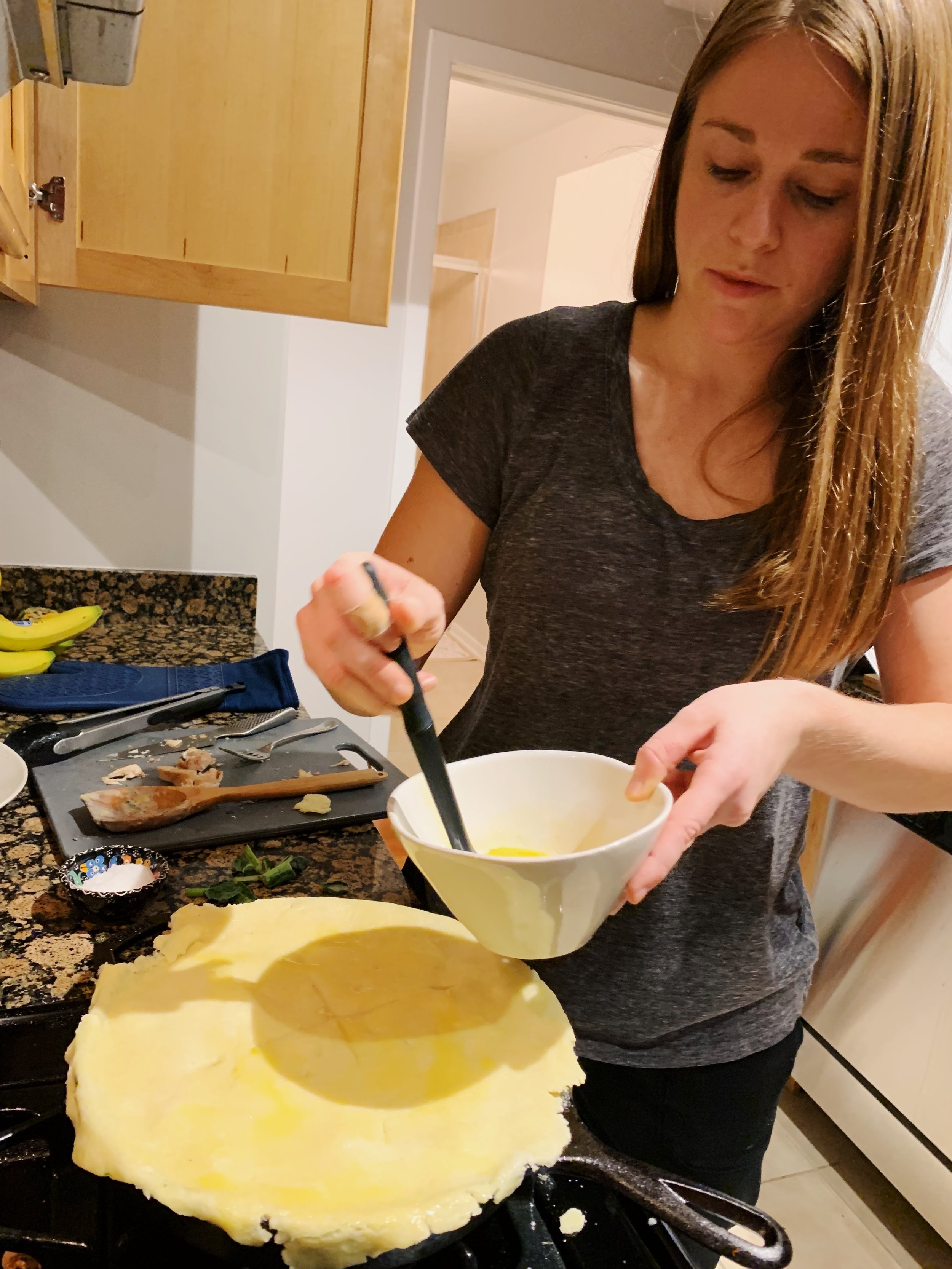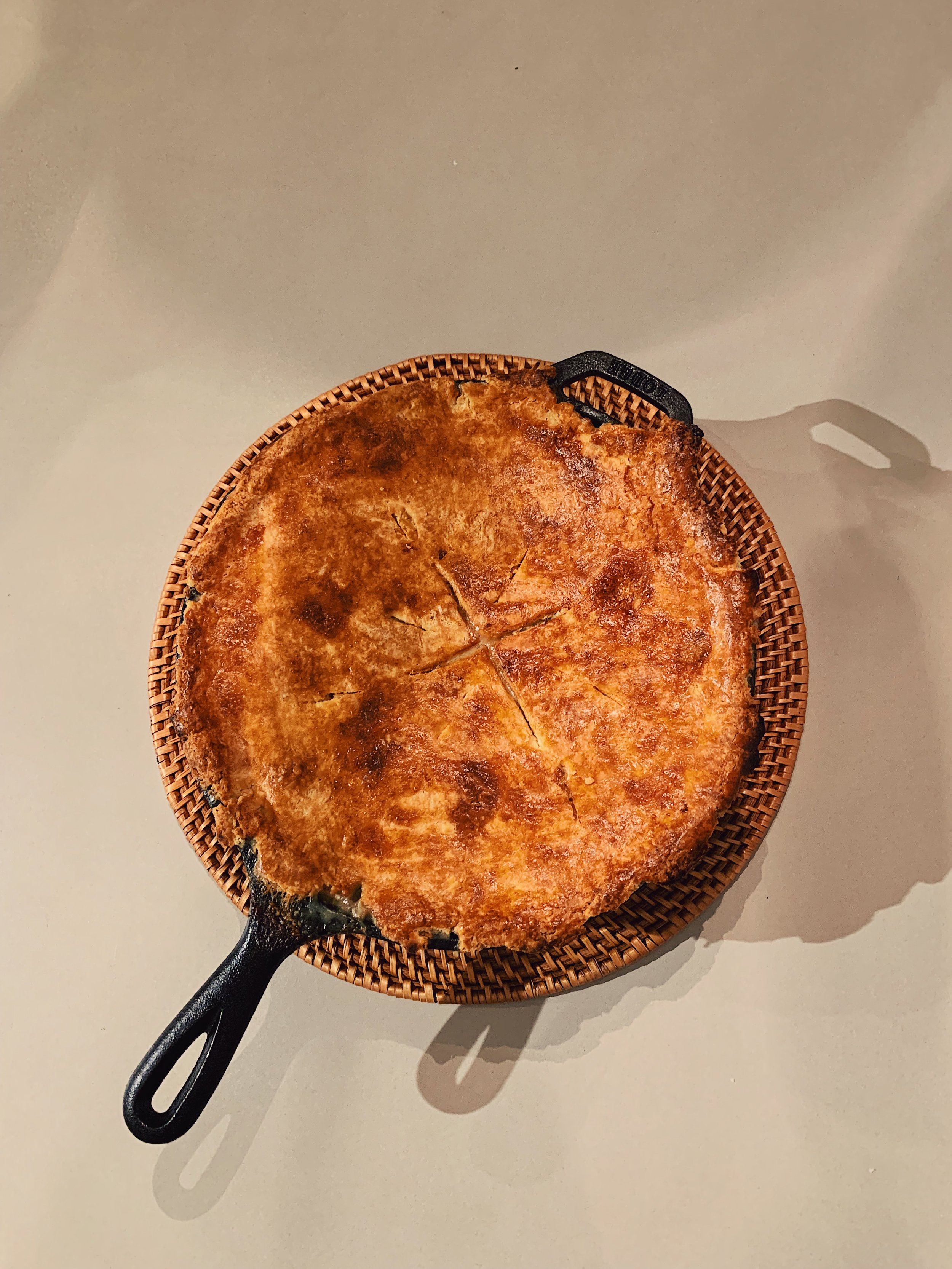For the past 8 months, the vinegar-braised chicken recipe has sat unwritten in my blog’s Google Doc. Every time I saw the title sitting there, unaccompanied, I opted to write about another recipe. I didn’t have much to say about this chicken when I first made it, but now I’ve really put myself in a pickle because I can’t remember anything about how I made it or how it tasted. All I know is that I made it on April 5, 2021 because there’s photo evidence that tells me as much.
What I can deduce from all of this is that the chicken wasn’t a ton to write home about. I had to skip on the farro because of my gluten-aversion, which left only watercress and a simple roasted chicken to try. This recipe also has one of the shortest ingredient lists of all of Alison’s main course dishes, leaving the burden of flavor to just salt, pepper, vinegar, garlic, and a tablespoon of Yuzu Kosho.
Now hear me out, there are plenty of tasty chickens that use the same small amount of ingredients for flavor. But such a short list is off brand for Alison. One of her defining features is bold, in-your-face flavor. She doesn’t hold back. Which is why this recipe felt like a departure from her normal routine.
Perhaps I’d find this chicken refreshing if I made it again. I’ll probably give it a try! If you’re reading this and felt differently, please tell me?
216 recipes cooked, 9 to go.







